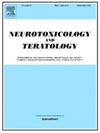东巴勒斯坦火车出轨:一场复杂的环境灾难。
IF 2.8
3区 医学
Q3 NEUROSCIENCES
引用次数: 0
摘要
本次研讨会题为“东巴勒斯坦火车脱轨:一场复杂的环境灾难”,汇集了科学家,他们的研究代表了对2023年2月俄亥俄州东巴勒斯坦灾难性火车脱轨和随后燃烧造成的化学品暴露对社区健康影响的初步科学反应。这种脱轨和燃烧导致多种复杂的有毒物质暴露于空气、土壤和水中,包括氯乙烯和丙烯酸丁酯。发言者介绍了为协助制定和向受影响社区传播数据知情摘要而组成的多所大学联盟。发言者还报告了社区所经历的直接健康后遗症以及长期影响的压力和不确定性。据报告,由国家环境健康科学研究所资助的几项试点研究计划是为了立即对灾难作出反应。Fredrick Schumacher博士概述了健康未来研究的目标:将东巴勒斯坦的体细胞突变率与基线暴露联系起来,该研究计划使用体细胞突变率(SMR)来测量基于火车脱轨和居民临床症状的环境暴露的生物学影响。James Fabisiak博士分享了他们的研究计划,东巴勒斯坦社区参与的环境暴露,健康数据和生物标本库,将测量室内空气和家庭水中的化学污染物,监测居民的肝损伤,并确定父母对儿童健康和发展的担忧。作为该研究的一部分,劳拉·迪茨博士指出了社区所经历的主要社会心理压力源,特别是对儿童的心理影响,该研究将试图通过父母报告来确定。Timothy Ciesielski,医学博士,总结了通过目前可用的政府数据库从释放的有毒物质中得出与健康和安全风险相关的结论的困难,以及他在跨州界和多个州和联邦机构工作的背景下试图为社区提供可靠和有效信息的经验。本文章由计算机程序翻译,如有差异,请以英文原文为准。
The East Palestine train derailment: A complex environmental disaster
This symposium, The East Palestine Train Derailment: A Complex Environmental Disaster, brought together scientists whose research represented initial scientific responses to the community health impacts of the chemical exposures incurred from a disastrous train derailment and subsequent combustion in East Palestine, Ohio in February, 2023. This derailment and burn led to multiple complex toxic exposures to air, soil and water, including vinyl chloride and butyl acrylate. Presenters described the multi-university consortium formed to assist with developing and communicating data-informed summaries to the affected community. Presenters also reported on the immediate health sequelae experienced by the community and the stress and uncertainty regarding long term effects. Plans were reported for several pilot studies funded by the National Institute on Environmental Health Sciences in immediate response to the disaster. Fredrick Schumacher, PhD outlined the aims of The Healthy Futures Research Study: Linking Somatic Mutation Rate with Baseline Exposure in East Palestine that plans to use somatic mutation rate (SMR) to measure the biological impact of environmental exposures based on proximity to the train derailment and residents’ clinical symptomatology. James Fabisiak, PhD shared plans for their study, East Palestine Community-Engaged Environmental Exposure, Health Data, and Biospecimen Bank that will measure chemical contaminants in indoor air and water in homes, monitor liver damage in residents and identify parents’ concerns about children’s health and development. As part of that study, Laura Dietz, PhD noted the major psychosocial stressors experienced by the community, particularly the psychological effects on children which the study will try to identify through parental report. Timothy Ciesielski, MD, PhD summarized the difficulties of drawing conclusions related to health and safety risk from the toxicants released through currently available government databases and his experience trying to provide the community with reliable and valid information in the context of working across state lines and multiple state and federal agencies.
求助全文
通过发布文献求助,成功后即可免费获取论文全文。
去求助
来源期刊
CiteScore
5.60
自引率
10.30%
发文量
48
审稿时长
58 days
期刊介绍:
Neurotoxicology and Teratology provides a forum for publishing new information regarding the effects of chemical and physical agents on the developing, adult or aging nervous system. In this context, the fields of neurotoxicology and teratology include studies of agent-induced alterations of nervous system function, with a focus on behavioral outcomes and their underlying physiological and neurochemical mechanisms. The Journal publishes original, peer-reviewed Research Reports of experimental, clinical, and epidemiological studies that address the neurotoxicity and/or functional teratology of pesticides, solvents, heavy metals, nanomaterials, organometals, industrial compounds, mixtures, drugs of abuse, pharmaceuticals, animal and plant toxins, atmospheric reaction products, and physical agents such as radiation and noise. These reports include traditional mammalian neurotoxicology experiments, human studies, studies using non-mammalian animal models, and mechanistic studies in vivo or in vitro. Special Issues, Reviews, Commentaries, Meeting Reports, and Symposium Papers provide timely updates on areas that have reached a critical point of synthesis, on aspects of a scientific field undergoing rapid change, or on areas that present special methodological or interpretive problems. Theoretical Articles address concepts and potential mechanisms underlying actions of agents of interest in the nervous system. The Journal also publishes Brief Communications that concisely describe a new method, technique, apparatus, or experimental result.

 求助内容:
求助内容: 应助结果提醒方式:
应助结果提醒方式:


